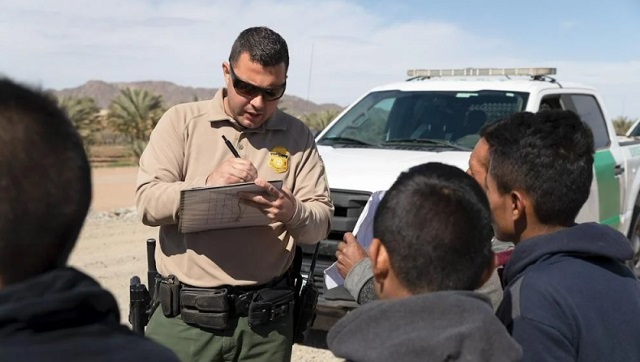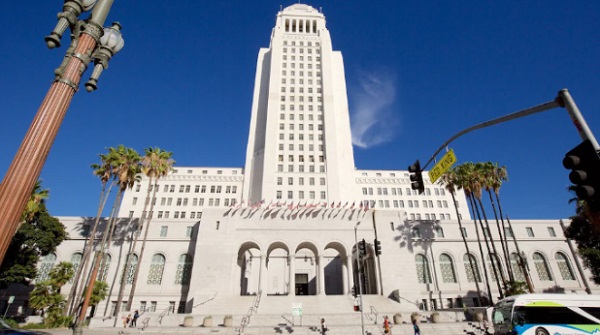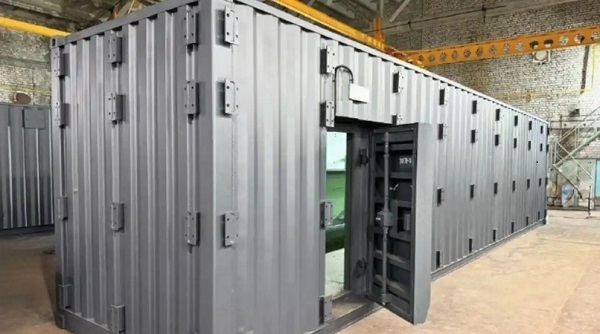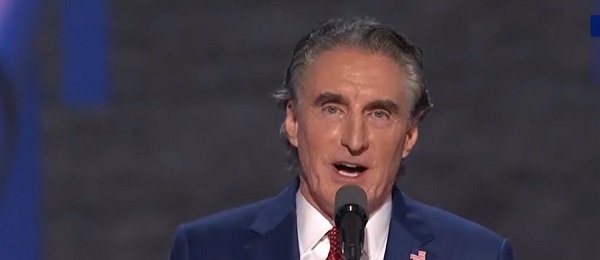illegal immigration
Renewed calls to end Chicago’s sanctuary status ahead of expected migrant surge

From The Center Square
By
With the city of Chicago already spending as much as $1.5 million a day for migrant housing and thousands of new arrivals expected in the weeks ahead, local activist Tio Hardiman is renewing his call for the city to reverse its sanctuary city status.
For the past two years, Chicago has received more than 45,000 foreign nationals from the southern U.S. border, where border communities have been inundated with border crossers. The taxpayer costs for Illinois and the city of Chicago continue with the new state budget that started this month setting aside more than $900 million for health care, housing, food and even legal subsidies.
Texas Gov. Greg Abbott recently went on record with his plan to continue busing people to Chicago, where local law enforcement are prohibited from assisting enforcement of federal immigration laws. Earlier this week, a Chicago City Council committee heard from the budget director they have not budgeted for the expected surge.
Chicago Mayor Brandon Johnson was asked about the potential of thousands of more non-citizen migrants being transported to the city leading up to the Democratic National Convention next month.
“We have right now, currently, roughly 5,600 new arrivals that are still in our shelters. Our collective resources are prepared for as many as 15,000 but we certainly hope that Gov. Abbot finds Jesus Christ as his lord and savior and don’t do that,” Johnson said Thursday.
Hardiman said he’s had enough of all the politics coming from both sides.
“The Democrats may be looking at the migrant situation like, in the next two or three years, all those migrants will become registered voters,” he said. “The Republicans are looking from a lens where they’re trying to penalize some of the Democratic cities.”
Overall, the city has paid out at least $185 million to care for migrants over the last six months. Hardiman said policies have to change.
“Let’s bring an end to sanctuary cities because the city is not prepared,” Hardiman said.
Hardiman’s calls for the city to reverse course goes back to 2023, when he argued state lawmakers were not doing nearly enough to help the longtime downtrodden residents of the state and that its newfound migrant problem is one wholly created by bad policy.
All the runaway spending sends a clear and irrefutable message, he said.
“The state, city and county have already spent close to … $800 million or more on the immigrant crisis here, and all those resources are going to the illegal immigrants and the resources should be going to those that are already here struggling each and every day,” he said. “The message is going out that elected officials care more about the illegal immigrants than they care about the people that have been there their whole life struggling.”
Through all the back and forth, Hardiman said one thing remains clear to him.
“I’m never going to sit up and agree that we should be a sanctuary city and allow illegal immigrants to come over and receive all the resources in this state and you got people here starving right now,” he said.
The surge of migrants is expected to coincide with the Democratic National Convention that begins in Chicago Aug. 19.
Daily Caller
Los Angeles Passes ‘Sanctuary City’ Ordinance In Wake Of Trump’s Deportation Plan

 From the Daily Caller News Foundation
From the Daily Caller News Foundation
The Los Angeles City Council approved an ordinance Tuesday designating the city as a “sanctuary city” following President-elect Donald Trump’s mass deportation plan.
This measure prevents the use of local resources for immigration enforcement and prohibits city agencies from sharing information about undocumented residents with federal immigration authorities, according to The Associated Press. The council voted unanimously, aligning Los Angeles with numerous cities across the U.S. that have adopted similar policies.
The ordinance will undergo a second council vote for procedural reasons as Mayor Karen Bass, who has expressed support for the initiative, holds veto power but is unlikely to use it, AP reported. Councilmember Hugo Soto-Martinez pointed out the city’s firm stance against cooperating with Immigration and Customs Enforcement (ICE).
🚨 President-Elect Trump has named Tom Homan as Border Czar. pic.twitter.com/XNfp4to0Ev
— Daily Caller (@DailyCaller) November 11, 2024
“We’re going to send a very clear message that the city of Los Angeles will not cooperate with ICE in any way,” Soto-Martinez said. “We want people to feel protected and be able to have faith in their government and that women can report domestic violence crimes.”
Soto-Martinez also noted that many immigrants without legal status are integral to the community, working in roles such as housekeepers, nannies, and cooks, AP reported. While the ordinance highlights the city’s values, critics argue that Los Angeles already refrains from cooperating with federal immigration agencies, suggesting the policy may not bring significant operational changes.
Trump announced that former acting ICE Director Tom Homan will take on the role of border czar in his upcoming administration. Homan will oversee border operations, including deportations, security at land and sea entry points, and aviation safety measures.
Trump revealed Monday that he plans to declare a national emergency and deploy military resources to execute his mass deportation agenda. He confirmed reports from Judicial Watch’s Tom Fitton, who claimed the administration is ready to use emergency powers to address what he called the “Biden invasion.”
Daily Caller
“I know three families that have gone to Canada.”: Locals Say Haitians Are Hoofing It Out Of Springfield After Trump Win

 From the Daily Caller News Foundation
From the Daily Caller News Foundation
‘They Are Afraid’
Haitians living in Springfield, Ohio appear to be fleeing the city in droves after President-elect Donald Trump was declared the winner of the election, according to reports from locals.
The national spotlight shined on Springfield, a city of roughly 60,000 residents nestled in central Ohio, for weeks following unverified viral online claims that Haitians migrants had been spotted butchering a pet for consumption. The subsequent uproar about Springfield sparked further media debate about mass migration and its consequences, as Springfield has been dealing with an influx of Haitian migrants in a relatively short amount of time.
“The traffic situation seems to be better now,” longtime resident Barron Seelig said to the Daily Caller News Foundation, referring to widespread accounts from city residents in past months that Haitian drivers are causing mayhem on the roads.
While Seelig did speak about local rumors of impending Immigration and Customs Enforcement (ICE) raids possibly scaring Haitians away, he also mentioned recent crackdowns by highway patrol officers and added that some migrants are leaving because they don’t enjoy the Ohio winters. Another Springfield local told the DCNF that he heard it was virtually impossible to rent a U-Haul truck because so many Haitians are currently renting them — presumably to leave town.
Those who provide services to immigrant services in the city have also said that Trump’s election victory has prompted Haitians to flee en masse.
“Some folks don’t have credit cards or access to the internet, and they want to buy a bus ticket or a plane ticket, so we help them book a flight,” Margery Koveleski, who helps Haitian migrants manage government bureaucracy, told The Guardian. “People are leaving.”
“People are fully aware of the election result, and that is why they are leaving; they are afraid of a mass deportation” Jason Payen, a co-founder of the Haitian Community Alliance, said to the Guardian.
“Several of my customers have left. One guy with his family went to New Jersey; others have gone to Boston,” Payen continued. “I know three families that have gone to Canada.”
Trump, for his part, has vowed to embark on a border enforcement agenda that will apply to the entire country.
During the campaign, Trump pledged to continue building the U.S.-Mexico border wall, revive the Remain in Mexico program, hire more border patrol agents and conduct the “largest deportation program in American history,” and end birthright citizenship for those born on U.S. soil to illegal migrant parents.
Trump said in October that he would revoke Temporary Protected Status (TPS) for Haitian nationals and “bring them back” to the country. The Biden-Harris administration has provided TPS — which temporarily gives deportation protections to its designees — to hundreds of thousands of Haitian nationals currently living in the U.S.
-

 ESG2 days ago
ESG2 days agoCan’t afford Rent? Groceries for your kids? Trudeau says suck it up and pay the tax!
-

 John Stossel2 days ago
John Stossel2 days agoGreen Energy Needs Minerals, Yet America Blocks New Mines
-

 Daily Caller2 days ago
Daily Caller2 days agoLos Angeles Passes ‘Sanctuary City’ Ordinance In Wake Of Trump’s Deportation Plan
-

 Alberta2 days ago
Alberta2 days agoProvince considering new Red Deer River reservoir east of Red Deer
-

 Addictions2 days ago
Addictions2 days agoBC Addictions Expert Questions Ties Between Safer Supply Advocates and For-Profit Companies
-

 Aristotle Foundation1 day ago
Aristotle Foundation1 day agoToronto cancels history, again: The irony and injustice of renaming Yonge-Dundas Square to Sankofa Square
-

 conflict2 days ago
conflict2 days agoPutin Launches Mass-Production of Nuclear Shelters for his People
-

 conflict1 day ago
conflict1 day agoUS and UK authorize missile strikes into Russia, but are we really in danger of World War III?






